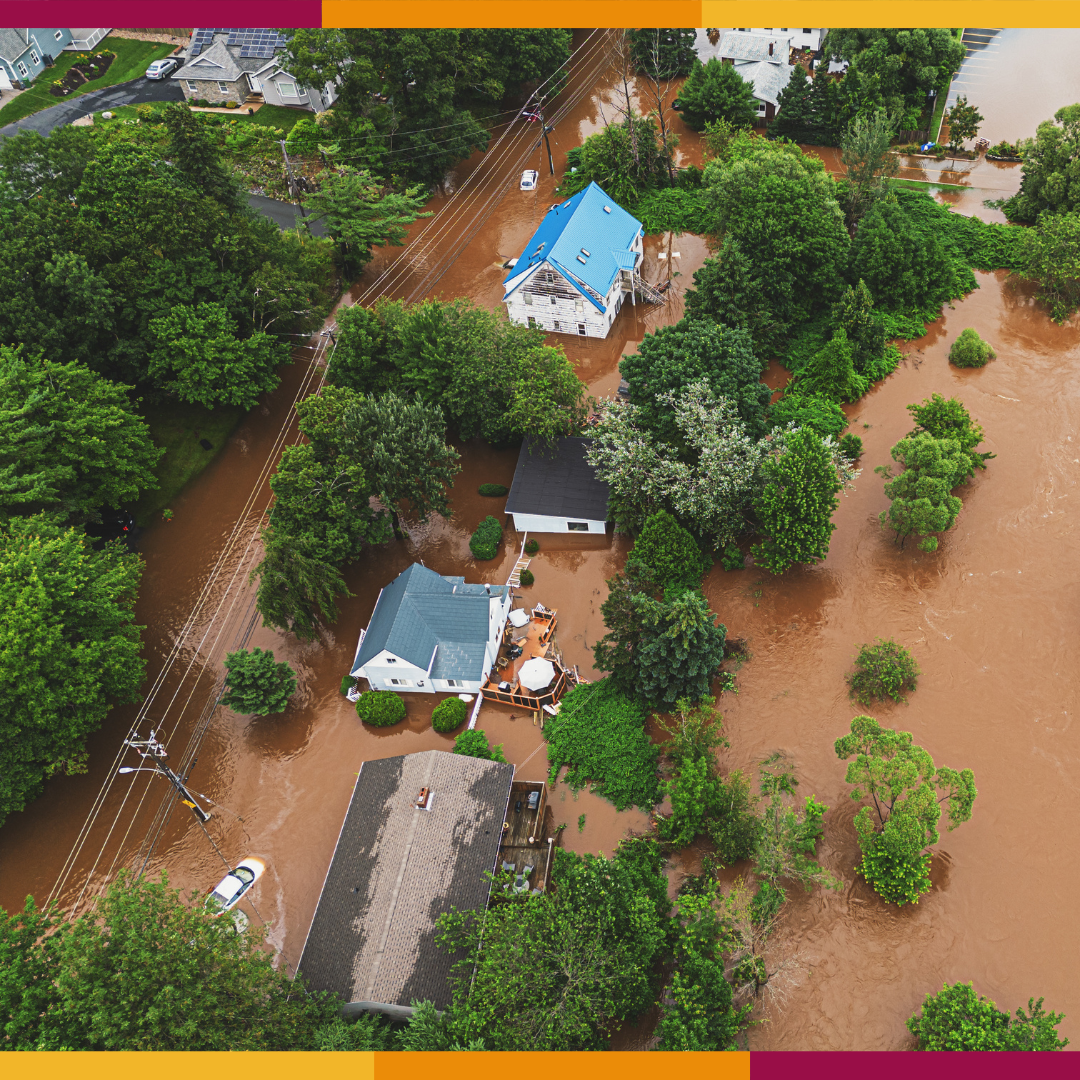
Lisa A. Gardner, Ph.D., CPCU, AIC, AIDA, API,
is the Associate Director, Content and Research, at the Risk & Insurance Education Alliance.
Over the two days from August 9th to the 10th, rainfall totaled an average of 9.18 inches in Milwaukee County, Wisconsin, an amount sufficient to rank the two-day rainfall event as one of the heaviest rainfall periods in the area since tracking began in 1871 (Looby, 2025). The amount qualifies the event as a 1000-year flood, which means that it has a 1 in 1000 (0.1%) chance of occurring each year (Ibid).
While the odds of such an event were slim, the impact was substantial. Large amounts of rain fell throughout Milwaukee County, resulting in flooding by its three major rivers: the Kinnickinnic, Menomonee, and Milwaukee Rivers. Lakes, streams, and creeks overflowed as well. Lake Michigan forms Milwaukee County’s eastern border, further compounding flooding problems.
The built environment undoubtedly contributed to flooding as well. The most heavily populated county in Wisconsin, with 951,448 residents, Milwaukee County’s built environment occupies a significant portion of the county’s land (Milwaukee County, 2025). Most buildings, roadways, and parking lots do little to absorb flood waters, exacerbating flooding challenges.
Flash flooding affected businesses, homes, roads, and parking lots in Milwaukee County. Sewer systems, strained to handle heavy precipitation, could not keep up, resulting in sewage backups. Power outages occurred, too, along with electrical hazards, natural gas leaks, and fires (Matz, 2025). Motor vehicles stalled, requiring the emergency rescue of some occupants (Ibid). Events were also cancelled, the most notable of which was the Wisconsin State Fair’s last day. Fortunately, no deaths from the extreme rainfall event have been reported to date.
While loss evaluation continues, it appears safe to say that this 1000-year flood caused substantial property damage and corresponding loss of business income. Because floods are a commonly excluded cause of loss in property policies, and few insureds carry flood insurance, most property and corresponding business income losses will not be covered by insurance.
Milwaukee County is one of several locations across the US experiencing extreme precipitation events this summer. Kerr County in Central Texas, North Carolina’s Eno River Basin, Ruidoso, New Mexico, and portions of Chicago all experienced flash-flooding due to torrential downpours this summer (Danielle, 2025). Three of these events (Kerr County, Eno River Basin, and Ruidoso) resulted in fatalities in addition to causing devastating property losses (Ibid). Taken together, these and other less well-publicized events suggest that the summer of 2025 is one of the most flood-impacted summers on record (Ibid).
Guide Clients Through Complex Commercial Property Risks with Expert Knowledge—All at Your Own Pace!
The Alliance’s CIC Commercial Property self-paced course explores essential coverages, forms, endorsements, and valuation considerations related to commercial property insurance. Additionally, it addresses causes of loss, time-element coverages, and strategies to reduce E&O exposure. This course provides designation update credit and qualifies for continuing education credit in several states
For more information, see:
References
Danielle, M. (2025, July 22). Is flash flooding getting worse? Summer’s soaking start may hold the answer. Retrieved from Accuweather
Looby, C. (2025, August 11). How rare was this weekend’s rain? It was a 1,000-year flood event. Retrieved from Milwaukee Journal Sentinel
Matz, L. (2025, August 11). Milwaukee leaders detail historic flooding damage and outline recovery efforts after record rainfall. Retrieved from Milwaukee Independent
Milwaukee County. (2025, August 12). Milwaukee County Wisconsin About Us. Retrieved from Milwaukee County












